News
Trade stabilizes at year-end but fewer containers are at sea
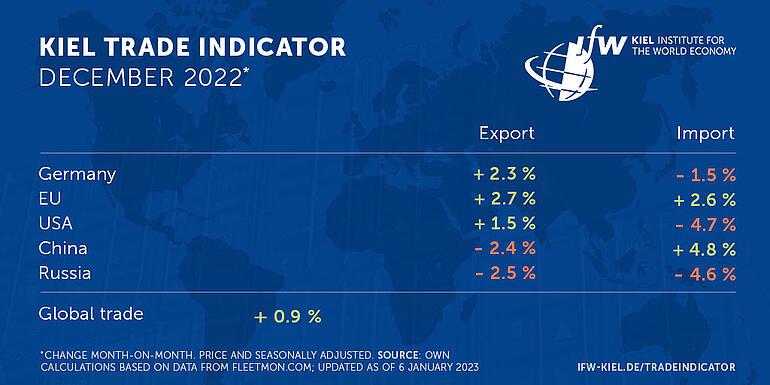
Global trade showes more activity in December as compared to the previous month as the Kiel Trade Indicator signals growth at plus 0.9 percent (price and seasonally adjusted) in its latest update.
In December, Germany's foreign trade continues its sideways movement of recent months. The figure for exports shows a plus (+2.3 percent), but for imports a minus (-1.5 percent). The picture is clearer for the EU, where both exports (+2.7 percent) and imports (+2.6 percent) are positive.
For the US, the Kiel Trade Indicator signals an increase in exports (+1.5 percent) and a decrease in imports (-4.7 percent) compared to November.
In China, no consequences have yet been observed as a result of the new Covid infection wave in December and the relaxations in the handling of the virus. The decline in exports (-2.4 percent) is within the normal fluctuation and implies stagnation for the fourth quarter as a whole. Imports are actually up (+4.8 percent).
Russia's trade remains under pressure, with the Kiel Trade Indicator showing declines in both exports (-2.5 percent) and imports (-4.4 percent).
"Overall, global trade is stabilizing, which is a good sign given that there continue to be fears of recession. China's economy could receive a positive boost in the coming months from the lifting of the zero-Covid policy," says Vincent Stamer, head of the Kiel Trade Indicator.
"German foreign trade can look back on a successful 2022 in the face of adverse circumstances. Neither the supply bottlenecks nor Russia's war of aggression led to any decisive slumps. When the global economy has overcome its weak phase in 2023, this should also give German foreign trade an additional boost."
Maritime trade declines, new chart shows container volume on a monthly basis
The slowdown in the global economy is clearly leaving its mark on maritime trade. Since the beginning of 2022, the volume of containers traded has fallen significantly from over 14 million to the current figure of just over 13 million (20-foot standard containers). For the first time, the Kiel Institute estimates this value on a monthly basis. Previously, only annual data was available. The calculation is based on worldwide ship position data in real time on the open sea as well as at more than 1,200 ports. The utilization of container ships is measured on the basis of the draught.
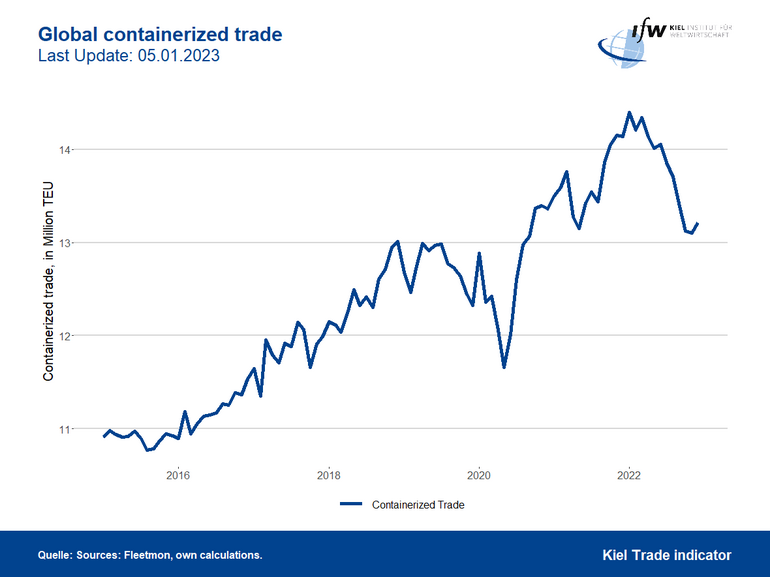
In the Red Sea, the most important maritime trade route between Europe and Asia, freight volumes are currently 17 percent below the level before the outbreak of the Covid-19 pandemic. In addition to reduced trade activity, the gap can also be explained by the issue that exporters have probably turned to alternative means of transport, among others freight trains, in view of sharply increased freight rates and low punctuality.
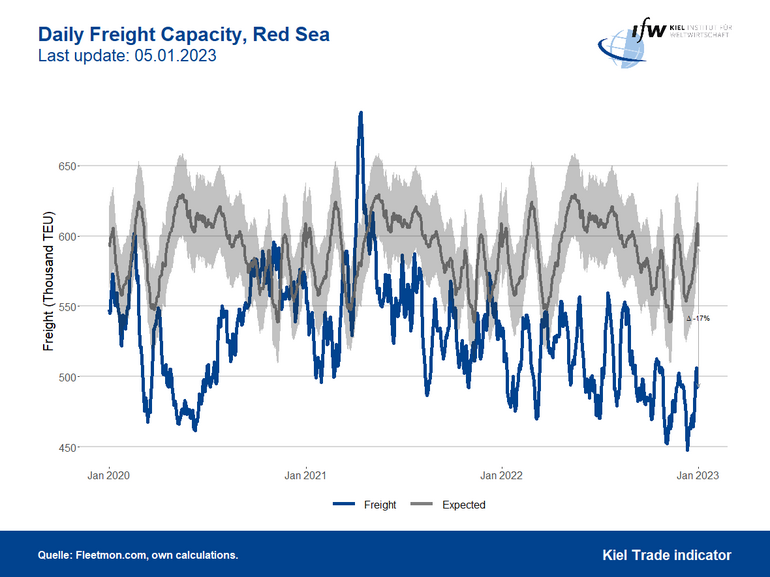
Russia increases maritime trade
More international container ships are again arriving at Russian ports. Imports of goods in the Black Sea port of Novorossiisk and in the Pacific port of Vladivostok, which is close to China, are currently at the level seen before Russia's war of aggression against Ukraine. However, this is unlikely to compensate for the loss of Western imports as still hardly any container ships are docking at the port of St. Petersburg, which is crucial for trade with the EU.
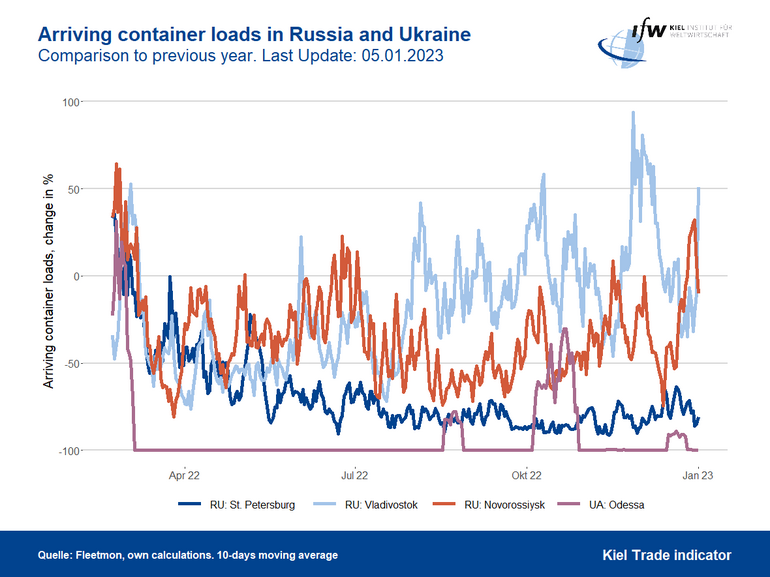
"Imports from China are likely responsible for Russia’s increased maritime container traffic. This trade alliance fits the picture of fragmented global trade, which is increasingly taking place within eastern and western economic blocs, rather than between them. Therefore, even if trade remains stable globally the exchange of goods with the Far East could lose its former acceleration," Stamer said.
For more information on the Kiel Trade Indicator and forecasts for 75 countries and regions, visit www.ifw-kiel.de/tradeindicator.
The next update of the Kiel Trade Indicator will take place on January 23 (without media information) and on February 7 (with media information) for January trade data.
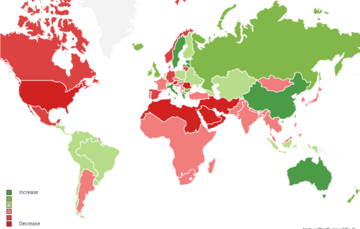
About the Kiel Trade Indicator
The Kiel Trade Indicator estimates trade flows (imports and exports) of 75 countries and regions worldwide, the EU and world trade as a whole. Specifically, the estimates cover over 50 individual countries as well as regions such as the EU, sub-Saharan Africa, North Africa, the Middle East or emerging Asia. It is based on the evaluation of ship movement data in real time. An algorithm programmed at the Kiel Institute uses artificial intelligence to analyze the data and translates the ship movements into real, seasonally adjusted growth figures compared with the previous month.
We update the data twice a month. Around the 20th (without press release) for the current and the following month and around the 5th (with press release) for the previous and the current month.
Arriving and departing ships are recorded for 500 ports worldwide. In addition, ship movements in 100 maritime regions are analyzed and the effective utilization of container ships is derived from draught information. Country-port correlations can be used to generate forecasts, even for countries without their own deep-sea ports.
Compared to previous leading trade indicators, the Kiel Trade Indicator is available much earlier, is much more comprehensive, relies on a uniquely large database using big data, and has a low statistical error by comparison. The algorithm of the Kiel Trade Indicator uses machine learning, so that the quality of the forecast continues to improve over time.
